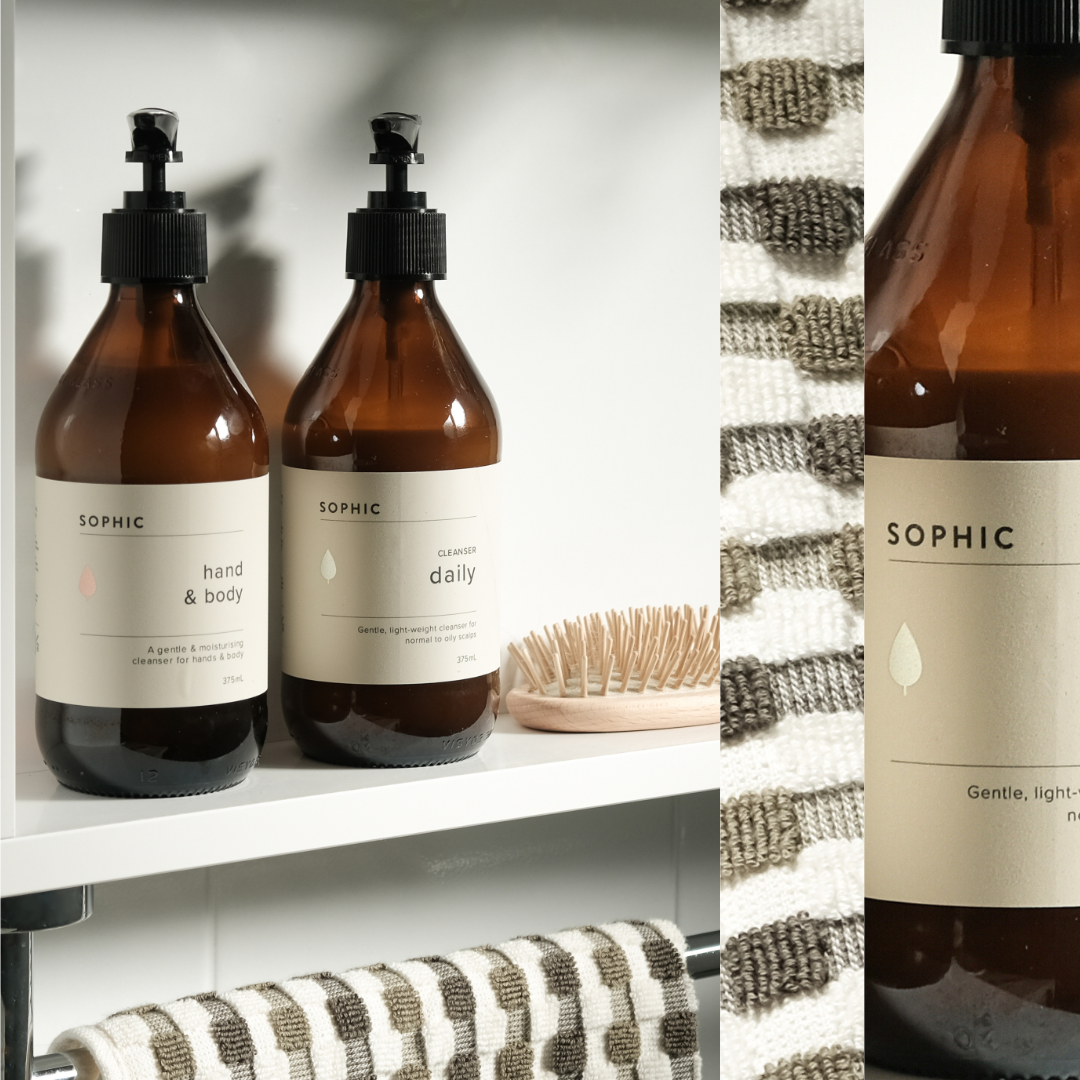
Hair Products for Low Porosity Hair
If your hair refuses to soak up moisture, stays dry no matter what, and goes full fuzz at the first sign of humidity, there’s a good chance you’re dealing with low porosity hair, and it’s not as rare as you think. In fact, it’s super common, especially among wavy, textured, and colour-treated hair types. I bet you're looking for the best hair products for low porosity hair? You've come to the right place!
Hair Products for Low Porosity Hair
The good news? With the right approach (and the right ingredients), you can bring dry, stubborn strands back to life, without heavy product build-up or flat, weighed-down ends. This blog breaks down exactly what low porosity hair is, why your current products might not be working, and how to find the best hair products for low porosity hair that deliver real, lasting hydration.
What is low porosity hair, anyway?
Let’s keep it simple: porosity refers to how well your hair can absorb and retain moisture. If you have low porosity hair, your hair cuticles lie flat and tightly packed together. This makes it difficult for moisture and nutrients to penetrate the hair shaft, kind of like trying to water a plant with a waxy coating on its leaves.
The result? Hair that stays dry no matter how much product you use, takes forever to air-dry, and often ends up with product residue just sitting on top. Sound familiar?

Signs you might have low porosity hair:
- Products tend to sit on your hair instead of absorbing
- Hair takes a long time to dry
- Water beads up on your hair in the shower
- Frequent frizz or flyaways
- Dull or dry appearance even after conditioning
- Protein sensitivity or stiffness after protein treatments
Low porosity doesn’t mean your hair is damaged or unhealthy, it just means it's particular. You need to work with your hair’s structure, not against it.
What does low porosity hair need?
Think lightweight, not heavy. Hydration, not just moisture. Natural actives, not synthetic fillers. The best hair products for low porosity hair focus on gentle nourishment that can actually get past the tight cuticle barrier.
Here’s what to look for:
-
Water-based formulas: Avoid heavy butters and oils, which tend to coat the surface. Look for lightweight hydrating ingredients.
-
Penetrating actives: Small molecular-weight ingredients like glycerin, panthenol, aloe vera, and certain botanical extracts can absorb more easily.
-
Clarifying support: Low porosity hair is prone to build-up, so periodic gentle clarifying is key to avoid clogged strands.
- No silicones or sulphates: These only make it harder for moisture to reach your hair shaft, and they can cause long-term dryness.

Aussie botanicals that low porosity hair loves
At SOPHIC, we formulate our products around native Australian ingredients that naturally thrive in harsh, dry environments, making them ideal for dry, low porosity hair types. These powerhouse plants offer deep nourishment in lightweight, easily absorbed forms.
1. Quandong Fruit
Quandong is rich in Vitamin E and amino acids that support collagen and elastin. It helps soften the hair and improve hydration retention without adding weight. It's the kind of ingredient that makes hair products for low porosity hair not just effective, but also soothing and protective.
2. Desert Lime
Packed with Vitamin C and Phenolic acids, Desert Lime gives dull hair a much-needed antioxidant boost. It helps brighten and smooth the cuticle for shine and softness, making it especially effective in hair products for wavy hair where definition and hydration are key.
3. Bramble Wattle
This under-the-radar botanical is rich in fatty acids and works to draw moisture into the hair shaft. It’s a natural humectant that won’t cause buildup, making it perfect for hair that struggles to retain hydration. Bonus? It helps preserve hair colour and vibrancy.
4. Tea Tree Oil
Tea Tree is especially useful in hair products for frizzy hair thanks to its antimicrobial and clarifying benefits. It keeps the scalp in balance and can help lightly open the follicle for better nutrient absorption. A win for both scalp and strands!
How to build a low porosity hair routine that works
Let’s talk product strategy. Your hair needs hydration, but it needs it in the right form. Here’s how to approach your routine:
Step 1: Pre-Cleanse with Warm Water or a Gentle Steam
Before applying product, try soaking your hair with warm water or using steam to help open up the cuticle. This primes your hair to receive moisture more effectively.
Step 2: Use a Clarifying or Light Sulphate-Free Shampoo Weekly
Look for the best shampoo for natural and low porosity hair that removes build-up without stripping natural oils. This helps keep the hair shaft open for moisture to actually get in. We would recommend the Daily Cleanser.
Step 3: Apply a Lightweight, Hydrating Conditioner
The best conditioner for natural hair—especially low porosity types—should be water-based with plant-derived emollients. This delivers softness and manageability without coating the strands in film. We’d recommend the Daily Conditioner.
Step 4: Avoid Heavy Creams and Butters
Instead of shea butter or coconut oil-based products, go for leave-ins or hair mists that hydrate with aloe vera, botanical waters, or glycerine.
Step 5: Seal Lightly—If At All
If your hair needs it, finish with a tiny amount of a lightweight oil like jojoba or squalane, which won’t clog the cuticle. We’d recommend our Nourish Oil. A lot goes a long way, so start small and add as you need. We’re talking, half a drop to start with!
What About Frizz and Humidity?
Humidity can be a nightmare for low porosity hair, moisture can’t get in, but it sure tries. This causes the cuticle to puff up and frizz out. Using targeted hair products to stop frizz is essential here.
Look for ingredients that smooth the cuticle rather than seal it off. Desert Lime and Bramble Wattle are perfect for this because they hydrate and help smooth the hair surface, reducing frizz naturally without silicone.
Wavy Hair? Even More Reason to Go Light
If you have low porosity and wavy strands, you’ll want to double down on lightweight formulas. Wavy hair is especially prone to getting flattened by heavy creams and gels, which is why hair products for wavy hair should deliver definition without heaviness.
Desert Lime and Quandong work beautifully here too, hydrating, softening, and adding gentle shine without making waves droop or clump.
Final Thoughts
Low porosity hair isn’t “bad” or “difficult”—it just has its own rules. Once you understand what it needs (and what it absolutely doesn’t), everything gets easier. The right hair products for low porosity hair will hydrate, nourish, and support your strands from root to tip—without causing build-up or weighing you down.
So if you’re tired of fighting your hair with heavy oils, endless frizz-control sprays, or silicone-laden leave-ins, maybe it’s time to switch to nature. The kind that grows right here in our own Aussie backyard.
Ready to transform your routine?
Explore SOPHIC’s range of clean, conscious hair products for low porosity hair, made with native Australian botanicals and no nasties. Because your hair deserves hydration that actually works, and results that actually last.









